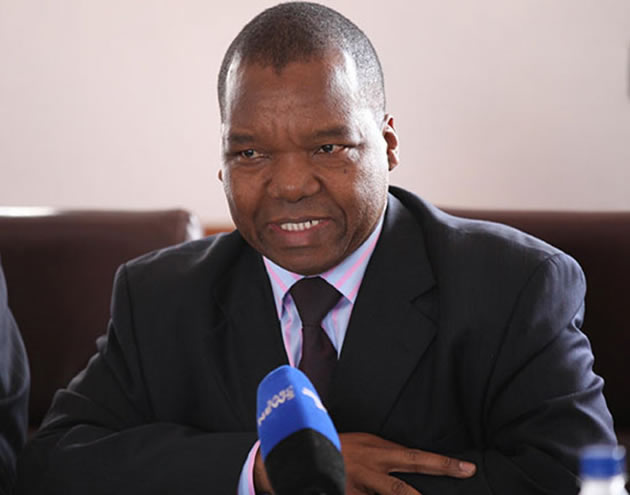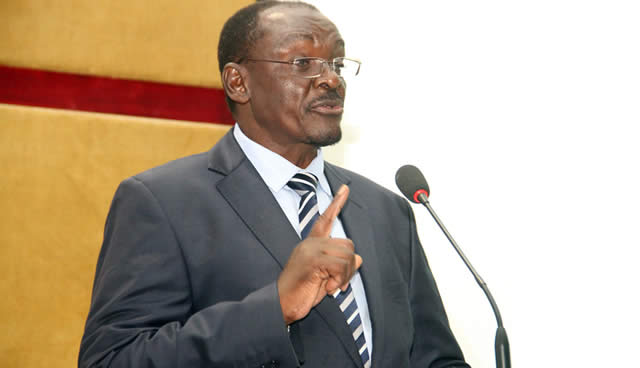RBZ to unveil ‘bond notes’ …-New withdrawal limits set, rand returns -Cash squeeze forces RBZ into action

Happiness Zengeni and Martin Kadzere Harare Bureau—
THE Reserve Bank of Zimbabwe is set to introduce bond notes to curb money flowing out of the country while a raft of measures have been put in place to promote the widespread use of multi-currencies to resolve the current cash shortages. The bond notes, just like the coins that were first introduced in 2014, will be backed by the $200 million Afreximbank nostro-support facility, which is expected to provide a cushion on the high demand for foreign exchange.
RBZ governor John Mangudya did not provide a date when the notes will be introduced, saying “it’s not an overnight process,” as they are currently at design stage.
“We’re still working on a design, which will be sent for printing outside the country. The notes will not be introduced immediately but probably within the next two months.” Mangudya emphasised that the introduction of the notes did not signal the return of the Zimbabwe dollar but was only a safety net against illicit financial flows.
“This doesn’t signal the re-introduction of the Zimbabwe currency. The fundamentals aren’t yet right for its comeback. This is just a measure to curb illicit flows out of the country.”
The central bank governor said that the $200 million facility will also provide an incentive facility of 5 percent on all foreign exchange receipts, including gold and tobacco sale proceeds.
The bond notes, which are meant to curb capital flight of United States dollars will be in denominations of $2, $5, $10 and $20 and will be an extension of the coins already in circulation, the RBZ governor said, adding that they will be at par with the US$.
“In order to mitigate against possible abuse of this ($200 million) facility through capital flight, proceeds from the fund shall be granted to qualifying foreign exchange earners in bond coins and notes, which shall operate alongside the currencies within the multi-currency system and at par with the US dollar,” the governor said.
He said the bond ns will also be used as discount trade related paper to provide liquidity for trading operations. The central bank has also reviewed maximum daily cash that can be taken inside the banking hall and at the ATM to 1,000 for US dollar and Euro, and R20,000. Maximum cash that can be taken out of the country has also been reduced to 1,000 for USD and euro and R20,000 with immediate effect.
The central bank noted that most retailers, local authorities, learning institutions, service stations and the informal traders were operating without point of sale machines and a directive was given that they should, with immediate effect, install the POS devices to promote the use of plastic money.
With effect from today, the central bank will convert 40 percent of new US dollar foreign exchange receipts to the rand and 10 percent to euros. This is aimed at ensuring widespread use of currencies and minimise against concentration risk of using the US dollar. The central bank and business have come up with a priority list to guide the distribution of foreign currency towards competing demands.
“The policy stance will ensure that the available foreign exchange resources are efficiently appropriated towards those sectors of the economy with the capacity to generate forex,” said Mangudya. “This will help reduce the country’s import bill and at the same time enhancing production across all sectors of the economy.”
He said to encourage the widespread use of other currencies, payments for imports should be done using the currency of origin. And for effective promotion of other currencies, product pricing would need to be reflective of the multi-currency system.
“Accordingly, in view of the fact that most products in Zimbabwe are from South Africa, it’s pertinent that shop owners and businesses should think in rand terms as opposed to abstract US dollar prices,” said Mangudya. Zimbabwe has been experiencing cash shortages during the past few weeks which has seen some banking institutions cutting withdrawal limits.
The major reason for cash shortages is a dysfunctional multi-currency system which has seen the country predominantly using the greenback as anchor currency unlike in 2009 (when multi-currency was introduced) where 49 percent of the transactions were performed using the rand.
Low usage of plastic money and real time gross settlement, low confidence and inefficient utilisation of scarce foreign currency have also resulted in cash shortages. The strong US dollar has made Zimbabwe a high cost producing country, expensive destination for tourists and externalisation continued to put pressure on the country’s balance of payment position.
In order to promote a savings culture, the central bank has with immediate effect requested all banking institutions to open special savings products which will have a minimum balance of $10,000 or 10,000 euro, R20,000 on a term structure of six months.
An annual compounded interest rate of 5 percent on US$ and euro balances and 10 percent on rand deposits will apply. The products should be tax free.












Comments